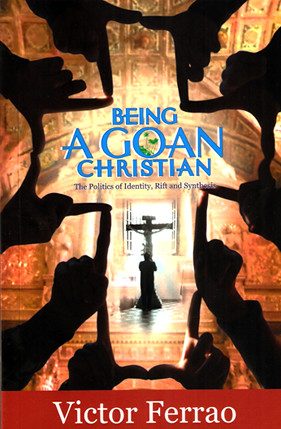The last time I had written about the
Konkani novelist Reginald Fernandes, I had suggested that to understand such
writings as romans (and even tiatrs) we would have to think anew and
look more closely into these writings. Accordingly, I had hinted that the way
Reginald Fernandes understood and conceptualized ‘dignidad’ could be one of the
many ways to understand the corpus of writings written in the Roman script. In
response to my article, many felt (through social media) that Fernandes’ books
should be put back in circulation. Though such an initiative would be welcome,
this was not the point I was trying to make. Rather, what I wanted to do was to
initiate critical discussion on the possibilities that are available in Fernandes’
writings.
To further explore this possibility,
this column would like to look at Fernandes’ Khoddop Rannim (1955) which has Valentino Vaz as its main
protagonist. The novel opens with Valentino’s mother on her death-bed, who tells
him the importance of being humble, for humility would allow Valentino to
succeed in life. Valentino’s mother worked as a randpinn or cook, whose husband, a seaman, was dead when Valentino
was a mere infant. Thus, facing impending poverty and with no family support
base in Goa, Valentino packs his bags for Africa. There he finds employment
with a great Goan trader of ivory called Robin Saukar. It is here that Robin
Saukar’s daughter Thelma and Valentino fall in love with each other. Valentino
initially was uncomfortable as he was a mere servant of her father’s and
according to him Thelma was placed higher as far as ‘dignidad’ was concerned.
However, it is Thelma who insists that they should not believe in such things.
The twist in the novel occurs when, to
procure ivory Robin Saukar takes Valentino and another employee Martin Monteiro,
in the African jungle. Because Monteiro wants to make Robin Saukar’s wealth his
own as well as marry Thelma, he deliberately misguides Valentino into the dense
and dangerous jungle. Here, the element of magic as a device for the
progression of the plot comes into play, both for good and bad. Monteiro
chances upon a witch-doctor who gives him some magical fruits that would turn
the hearts and minds of Robin Saukar and Thelma in his favour, when in fact the
preferred person was Valentino. On the other hand while Valentino survives his
ordeal, he also meets certain persons who direct him to a particular kingdom
which is situated inside a huge rock, shaped like a human head. The astonishing
fact of this kingdom is that its queen has lived for more than 2000 years, for
she has access to “Jivitachem Udok” or the elixir of youth.
As it turns out, this
queen or Khoddop Rannim owned a very
large diamond that is lodged in the temple that belongs to her family. It was,
apparently, the largest in the world. And because Valentino refuses the
advances of the queen, who madly falls in love with him, he is made a prisoner.
Valentino now has to escape this make-believe world, if he wants to maintain
any hope of being united with his beloved Thelma.
What should also be discussed at length
about this novel is the way Africa and blacks are represented in Khoddop Rannim. Africa was a part of the Goan diaspora and as such it was part of
the Goan imagination as well. Fernandes is not the first or only person to
write stories set in Africa. Indeed, many of the romi writers following the 1950s
(or, perhaps even earlier) did train their literary lens on Africa. The scenes
that are set in the dense and dangerous jungle of Africa would obviously
involve the depiction of peoples living in the forest. The language or the
collective nouns that are used to refer to these peoples would definitely
qualify to be racist by our standards. The point that I am trying to make is
not that Fernandes is consciously being racist, but for readers today, to be
aware and be sensitive to this issue while ‘Reading Reginald’ (and also other
writers who set their stories in Africa).
Though love between
social un-equals is part of the story, however it is not a preoccupation of the
author in this novel. Although the images of the African jungle that are
displayed to us draw on colonial accounts of adventure and exploration that
were definitely circulating during his time, the African jungle also becomes a
site of struggle for achieving ‘dignidad’. Whatever Valentino achieves or
manages to make his own, he can only do it by fighting for it. Though magic may
have helped Valentino’s pursuits, yet his human capabilities and strengths seems
to have sailed him through rough waters in this novel. But magic does play a
vital part in keeping the reader engrossed in the novel.
As a setting, if Africa is given deeper
reflection in novels or stories written in Konkani then it also points out to
the complexities and diversity of interactions and influences that Goa had with
the larger world. One could also profitably look at how the Portuguese colonial
world – just before formal decolonization – featured in Konkani literary space.
The fact that Africa had formed the setting of so many stories written in
Konkani in the Roman script, suggests deeper connections not just of travel and
migration but also of the movement of stories and colonial fantasies.
By keeping in mind certain vital
components that went into the making of a Reginald romans, we now have some basic markers to understand the thought
behind his novels, apart from enjoying them the way we do with any good novel.
For more of 'Reading Reginald' see here.
(First published in O Heraldo, dt: 20 August, 2014)




